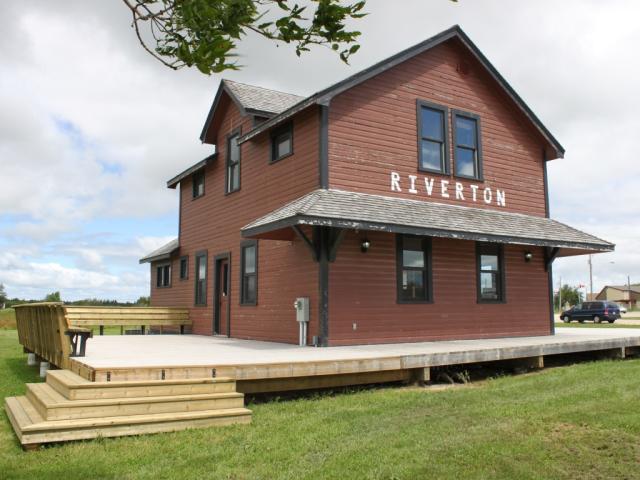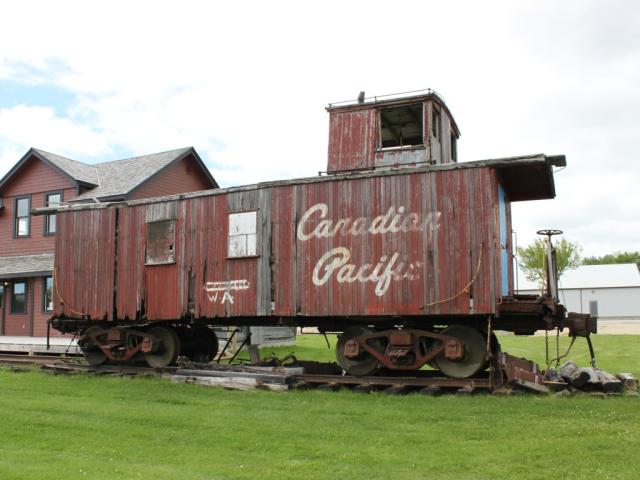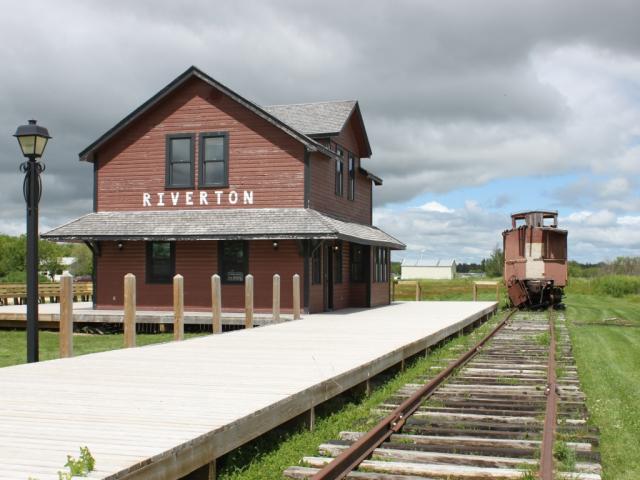
A few weeks ago, my family and I went camping in the Hecla Provincial Park on Lake Winnipeg, north of Winnipeg. It's a beautiful spot.
I had heard there was a train station in Riverton, Manitoba and I convinced my long-suffering wife that we could take a "short" jaunt out of the park to take some photos. Off we went and we found the station without any trouble. I was surprised to see a caboose there... but what a sad caboose.

I think if I were an executive with Canadian Pacific, I would be embarrassed to see the corporate name on this thing.
The station itself looks to be in good condition. There is a newish boardwalk around the station, complete with nameplates on each plank with the contributors' names. Good Icelandic names like Sigurdson and Erickson. The station was closed but there appears to be a museum of some sort inside.
I don't know when the rail line through here was abandoned. The CP Winnipeg Beach subdivision currently runs from Winnipeg to Gimli, terminating at the former Seagrams distillery. This line has been in danger of abandonment for more than a decade. The Selkirk Journal boasted a headline "tracks open for business" in 2003 and noted that the distillery had inked a deal with CP to keep the line open until at least 2008. At one time CEMR had wanted to purchase the line, but union successor rights torpedoed the deal.
Sadly, that deal was not renewed and the line from Selkirk to Gimli is on CP's three year plan and could be abandoned in late 2012.
Here's one parting shot of Riverton's station and caboose.

1 comment:
Great shots of a beautiful structure! On February 15, 1999, Canadian Pacific Railway donated more than 1600 miles of abandoned rail lines, including the 39.4 mile Gimli-Riverton. Originally settled by Icelandic Canadians, that beautiful station was commissioned in 1910. The teens saw literally hundreds of railroad stations being built as the CPR and later, Canadian Northern spread their webs. The Riverton line at one time was the most profitability for the CPR, transporting tourists to resorts that flanked the rail. That evaporated with the onslaught of the motor vehicle, which obviously gave people more options and "flexibility" in travel. You'll find an interesting account of those halcyon days at http://winnipegbeach.blogspot.com/ and a historic tome here: http://www.mhs.mb.ca/docs/mb_history/27/icelandicsettlement.shtml
Post a Comment